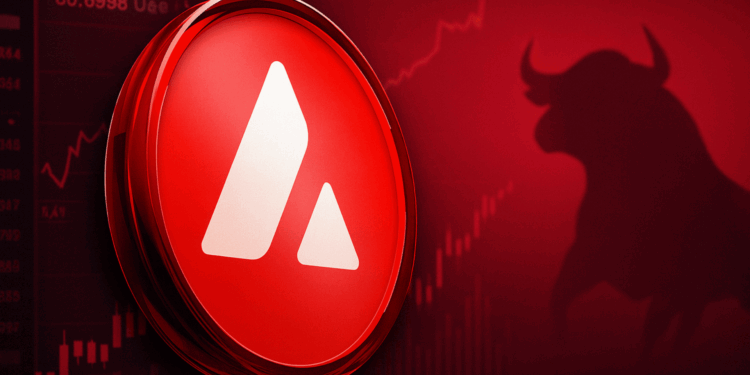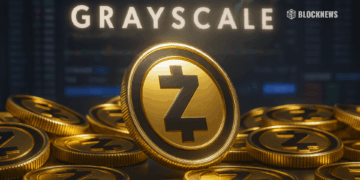- AVAX is defending its $22–$23 support zone, with a golden cross forming and bullish structures taking shape.
- On-chain activity is surging, with transactions topping 1.3M daily, showing growing network demand.
- Upside targets sit around $32–$34, provided resistance at $26.80 is cleared and accumulation continues.
Avalanche is back on the radar, with price action and network data starting to line up in a way that could set the stage for a big move. After weeks of grinding sideways, AVAX is showing early signs of bottoming and gathering strength—both against Bitcoin and the U.S. dollar. The key question now is whether this structure is the calm before a larger breakout toward higher levels.
AVAX Shows Signs of Bottoming Against Bitcoin
Market watcher Polaris_xbt noted that AVAX/BTC is pressing into a long-term demand zone, one that last acted as a launchpad in 2021. Structurally, the pair is hovering inside that green support band, around 0.000200 to 0.000190, where accumulation could take root if buyers consistently defend it. The MACD is hinting at early stabilization, suggesting momentum may finally be shifting after months of pressure.
If this level holds, it opens the door to higher lows forming on the pair—classic reversal territory. But if it gives way, bulls could be forced back into defensive mode, looking for deeper support zones.
Bubble Risk Remains Neutral, Giving Bulls Breathing Room
According to Into The Cryptoverse, AVAX isn’t flashing any overheating signals. Its bubble risk metric is hovering in neutral territory, far from the red and orange bands that often precede sharp local tops. This essentially leaves technical room for upside without the immediate risk of blow-off conditions.
In simple terms, the market doesn’t look overstretched here. That means if bulls want to push, they’ve got space to do it without running into frothy exhaustion right away.
AVAX Mirrors Chainlink’s Earlier Rally Setup
Another interesting angle is the comparison with Chainlink (LINK). While LINK exploded more than 150% in its latest run, AVAX has only managed a modest 3.5%. Still, its chart shows a consolidation structure that looks eerily similar to LINK’s basing pattern before that rally.
As babax memes pointed out, the sideways grind may actually be laying the groundwork for something bigger. If AVAX can defend its base and flip resistance levels with higher lows, the setup could mirror LINK’s recovery trajectory—meaning a breakout might be closer than many expect.
On-Chain Data Reinforces Strength
Fundamentals are starting to speak too. Avalanche just processed over 1.3 million transactions in a single day, triple the activity it saw earlier in August. That’s not just noise—it reflects genuine network demand, from DeFi use cases to token transfers. Importantly, transaction failures remain low, showing throughput is scaling smoothly.
Rising engagement like this often precedes stronger price momentum, as utility eventually translates into investor confidence. If usage keeps accelerating, price action could soon have no choice but to catch up.
Technical Picture: Bulls Eyeing $34
From a pure technical standpoint, AVAX is holding tight above its $22–$23 demand zone, a region where buyers have been stepping in repeatedly. The latest bounce also coincides with a golden cross on the daily chart, with the 50-day moving average climbing over the 200-day—often a reliable bullish signal.
Near-term, mid-range resistance sits around $26.80. But if bulls can clear that hurdle, charts suggest the next target zone lies around $32–$34. Volume trends are also supportive, with accumulation outweighing aggressive selling, reinforcing the case for upside.
Final Thoughts: Is AVAX Ready to Break Out?
Avalanche looks like it’s quietly building pressure under the surface. Price is holding where it needs to, whale flows aren’t screaming “bubble,” and on-chain engagement is surging. Together, those factors hint at a network preparing for its next phase.
Yes, resistance zones still need to be taken out, and volatility is always part of the game—but if demand keeps growing and $22–$23 holds as the base, a push toward $34 doesn’t just look possible, it looks increasingly likely.














